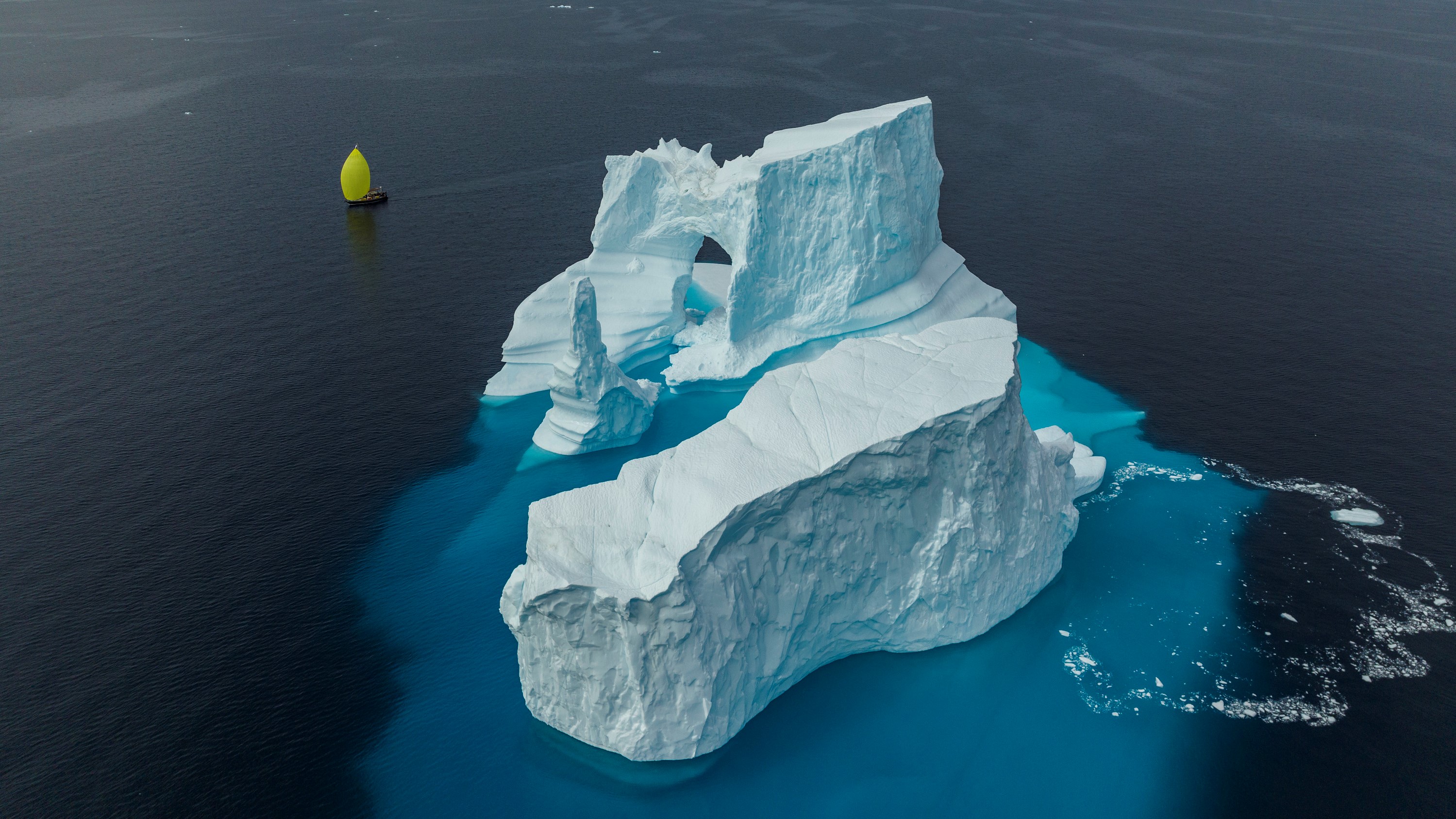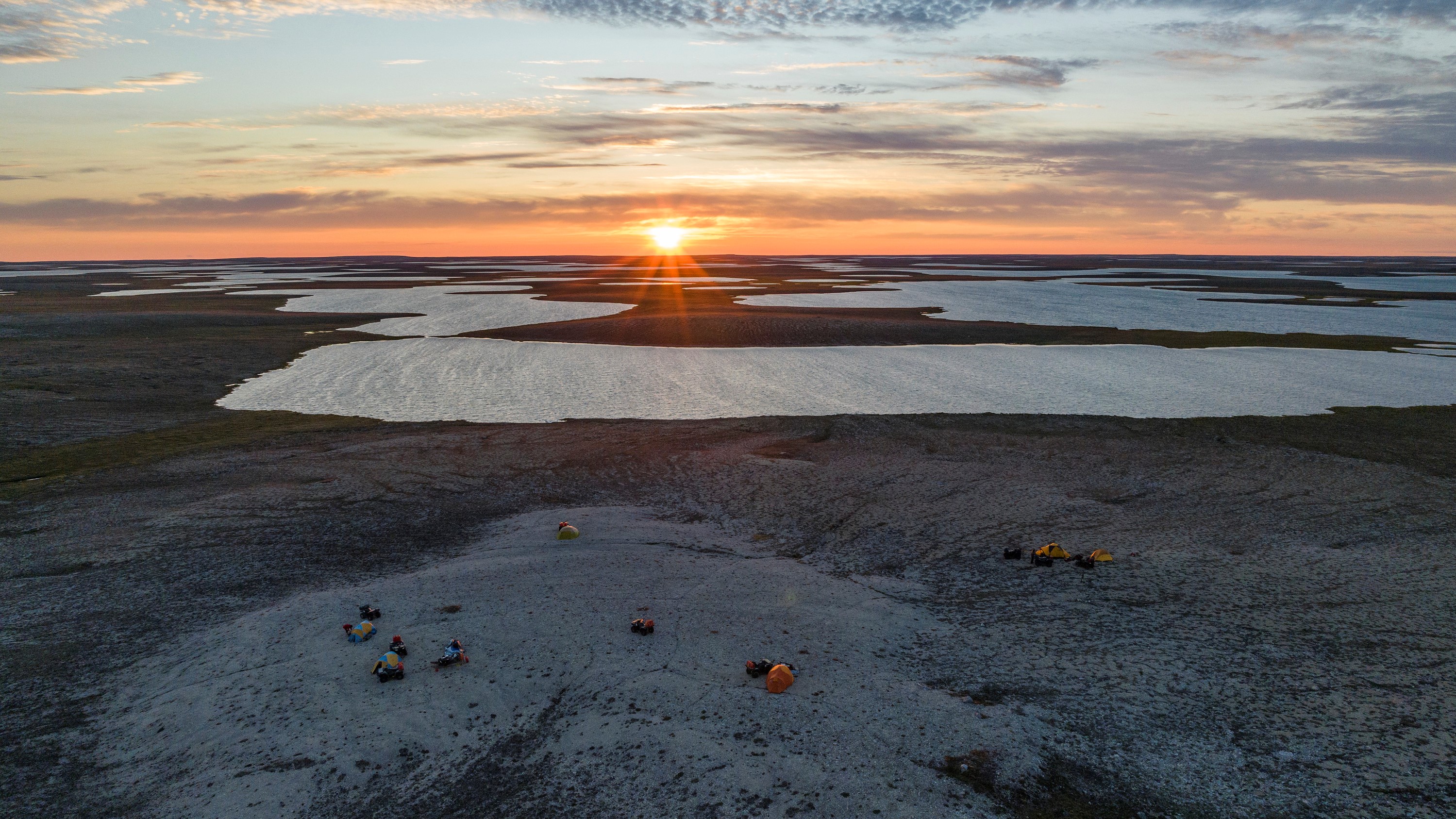Explorers retrace 1845 Arctic expedition that ended in death and cannibalism
Filmmakers retraced the deadly journey of two British exploration ships that set off in 1845 and never came back, in a quest to find their captain's tomb.
Explorers have retraced the path of a doomed 19th-century expedition to the Arctic in search of its legendary captain's tomb.
National Geographic's "Explorer: Lost in the Arctic," which premiered Thursday (Aug. 24), chronicles a four-month quest to find the grave of Sir John Franklin, whose ships vanished in the Canadian Arctic in 1846.
"I set the whole trip up so that I could try to feel what it was like for Franklin and his guys: sail in the same water, anchor in the same bays, weather the same storms, connect with their spirits," Mark Synnott, a National Geographic explorer, rock climber and author who led the new expedition, told TV Insider.
Franklin set off from England with two ships and 129 men in 1845 with the aim of being the first expedition to navigate the Northwest Passage — a route from the Atlantic Ocean to the Pacific Ocean through the Arctic. But in September 1846, the HMS Terror and HMS Erebus became trapped in the ice, according to a note discovered in 1859, and vanished. Several ships went in search of possible survivors in the decades following the disaster, but to no avail.
Modern-day searches have shed some light on what happened to Franklin's ill-fated expedition. In 2014, a Canadian search team found one of the lost ships, the HMS Terror, in Victoria Strait. Two years later, a tip from a local Inuit fisher led to the discovery of the HMS Erebus off the coast of King William Island.
Research also revealed that some of the crew died on the ice-locked ships, but 105 men survived on supplies they'd brought with them and abandoned the wrecks in April 1848. But in the end "we know they all died," Synnott said.
Get the world’s most fascinating discoveries delivered straight to your inbox.
The crew may have succumbed to a combination of starvation, scurvy — a disease caused by a serious vitamin C deficiency — and lead poisoning from eating poorly canned foods, some experts have posited. Others think the sailors died of tuberculosis, respiratory illness and cardiovascular disease, based on records that were kept in "sick books" on ships that were sent in search of survivors.
The sailors who abandoned their ships may have resorted to cannibalism to survive in the frigid expanse. Cracked bones discovered at Booth Point and Erebus Bay indicate crew members likely sucked out the marrow from their dead comrades' bones to extract every last bit of nutrition they could.
Synnott and a team of explorers and filmmakers followed the expedition's route through the Canadian Arctic, sailing through fog and storms until they reached King William Island. According to Inuit accounts, Franklin's tomb is located there, while a note found on the island indicates he died aboard HMS Erebus on June 11, 1847.
There, the explorers discovered various artifacts, including a tent peg, that suggested they were getting close. But after more than a week of scouring the landscape for signs of Franklin's tomb, the crew were forced to abandon their search.
Finding the tomb could reveal documents, such as logbooks and letters, that could help identify members of the original crew and piece together the tragic incident. "We'd be able to fill in the blanks and have stories told in their own words," Synnott said.
The explorers are hopeful the day will come when Franklin's tomb is found. "Once we find one thing, we'll have it all and it's just a matter of time," Tom Gross, a historian and explorer who has spent the last 28 years searching for the captain's resting place, said in the documentary.
National Geographic's "Explorer: Lost in the Arctic" is now available to stream on Disney+.

Sascha is a U.K.-based staff writer at Live Science. She holds a bachelor’s degree in biology from the University of Southampton in England and a master’s degree in science communication from Imperial College London. Her work has appeared in The Guardian and the health website Zoe. Besides writing, she enjoys playing tennis, bread-making and browsing second-hand shops for hidden gems.






